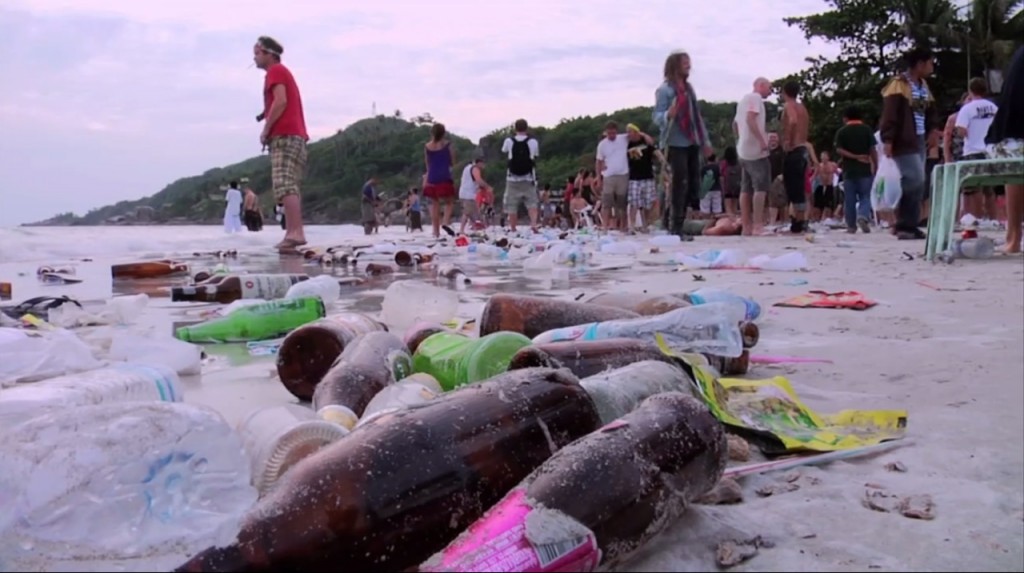We live in a world fraught with consequences. Surprisingly deep ethical conundrums arise out of the most superficial of interactions—buying dinner can easily slip into an existential crisis of the highest order. Anthropologist Pegi Vail didn’t set out to add travel to this list of difficult decisions, but her first feature-length film, Gringo Trails, chronicles the many destructive changes that occur when global foreigners overrun local places. “Right, you can’t just take a vacation anymore,” Vail jokes, “That’s the one place that was left and I ruined it!”
Vail, an associate director at the Center for Media, Culture, and History at New York University, and one of the cofounders of The Moth, spent decades making this film. Scenes from the Bolivian tourism industry, Timbuktu, Thailand, and Bhutan are interspersed with the stories of travelers—those who do it for love and those that have made traveling a career. “My hope was to open a conversation on these topics,” she explains. “A wake up call, but also a more nuanced look into what’s happening in the travel industry, not only from backpackers but all the way up to elite travelers.”

Gringo Trails, which screened at the Environmental Film Festival at Yale this month, grew out of her PhD work on travelers in Bolivia. “I was a big time backpacker, meaning independent traveler, throughout my 20’s. So I set out to do this film on backpackers as a community, as a culture, a kind of ethnography—to study my own tribe so to speak—so it’s both a personal and a professional perspective.”
With each subsequent return to the film’s locations, Vail saw disturbing transformations to the places she was documenting, and on such a rapid time scale it was hard to imagine, much less believe. “The change was in me in some ways, but also what I was seeing on the ground,” Vail remarks. “With the two different time periods I saw how dramatic those changes were, the impacts on culture and environment, which I consider really intertwined.”
For a local population, having a desirable tourist destination is both resource blessing and resource curse. Tourism brings much-needed dollars but can equally result in incredible damage, and has sometimes been called the newest form of imperialism. Strikingly, much of the “discovery” of these places is attributed to youthful backpackers who are eager to get off the beaten path. But in an age of lightning speed communication, these remote places don’t stay hidden for long. And once the crowd descends, get ready for mob ethics.
For instance, the film showcases the story of Haad Rin Beach, a strikingly beautiful bay in Thailand. Once upon a time, a few fishermen were its only occupants. By 1986—when Vail first visited—the occasional backpacker found it charming. But today, jetloads of disrespectful partygoers arrive, more interested in getting wasted, hooking up and blacking out facedown in the sand than in experiencing the tranquility of watching a full moon rise above turquoise waters. In Haad Rin, tourism itself has become the dominant culture, and as a result it is all too easy for visitors to forget they are behaving in excess.
Indeed, traditionally one of the most powerful aspects of traveling was that it caused alterations in the visitor—we travel to fill ourselves up with the unordinary. But with today’s tourism, Vail sees a parallel between urban gentrification and these global highways of leisure. Tourism is about selling nature and cultural heritage, and as the world is increasingly divided by lines of “have” and “have-nots,” traveling can easily become just another commodity to purchase, an encounter to consume, and a way to turn a foreign place familiar.
The film thus raises an important contradiction: how do we maintain the authenticity of travel and discovery? “Maybe its not so much authenticity—anything can be authentic—the guy with the cell phone in Bhutan on a mountain is just as authentic as the traditional person in a yurt in Mongolia,” Vail explains. “But it is about changing our ideas of what we are looking for, what authenticity means. So the idea of sincerity might be a nice way to think about it. What’s a sincere encounter with each other?”
But Vail also believes we are at a crucial moment, a tipping point in the globalization of tourism. “Writ large, tourism in general has more than doubled in the last decade or so. There are just more of us traveling to places, and so we have to think even more about responsibility factors and our privilege, and being guests in another culture.”

Actively managing and planning for tourism has the potential to reduce the negative impacts of so many visitors, and Gringo Trails highlights a number of these positive cases. Vail explains her reasoning for including these examples: “I love to travel, people love to travel, and it’s not about not traveling. It’s about thinking, ‘Ok, what can we do, what’s the next stage?’ The influx is so great in so many places, we have to think long term.”
Perhaps the biggest failing of the film is that it leaves us with no clear message of what exactly needs to be done. But in many ways, this is a problem without clear solutions. Still, Vail ends our conversation on a hopeful note. “Guilt’s never done anything. There are ways to give back. It can be little things. It’s changing habits. It’s about the individuals that are meeting each other on the road, instead of just passing through.”
The film will continue its own travels as it tours various festivals. You can see it next at the Media Arts Center in San Diego.
Edited by David Gonzalez.